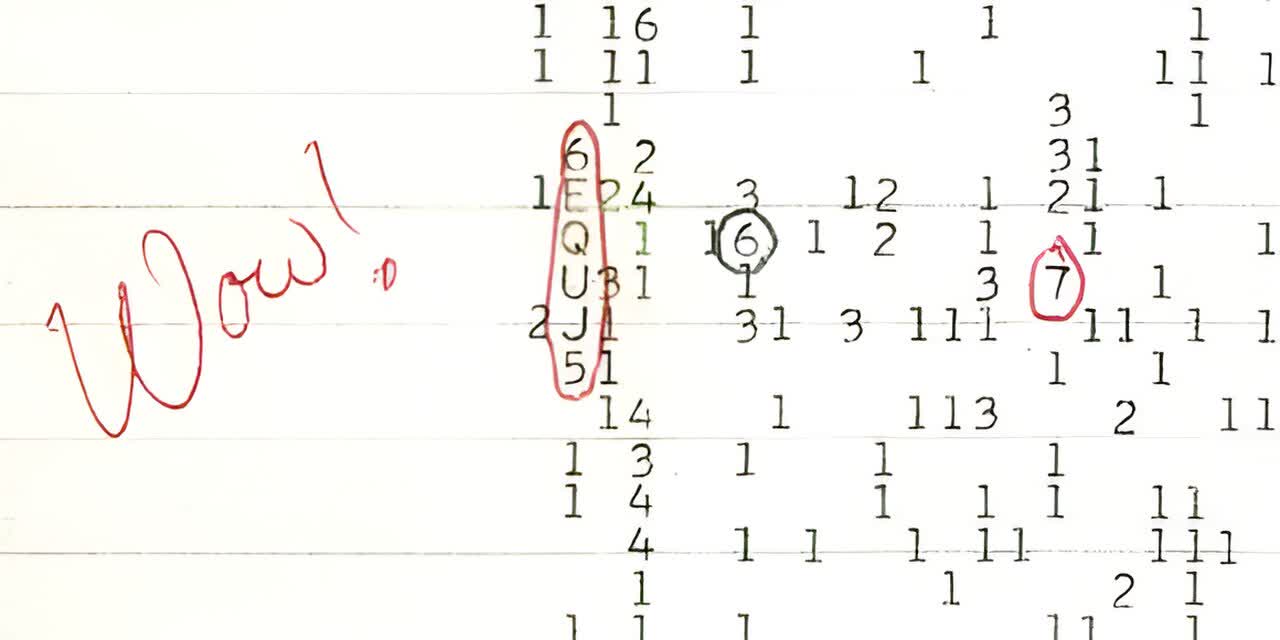Serving tech enthusiasts for over 25 years.
TechSpot means tech analysis and advice you can trust.
Recap: Back in 1977, a unique radio signal from deep space got astronomers all riled up about the possibility of first contact with intelligent aliens. It all began when astronomer Jerry Ehman stumbled upon a startlingly intense burst of radio waves that lasted over a minute, captured overnight by the Big Ear telescope at Ohio State University. Scribbling "Wow!" beside the printed data in bright red, Ehman thought he had discovered something extraordinary.
There was good reason for all the speculation about alien communication. The signal's specifics hinted at something unnatural – possibly even extraterrestrial. In 1959, physicists Philip Morrison and Giuseppe Cocconi theorized that advanced alien civilizations might use the 1420 megahertz frequency, which corresponds to the signature emission of hydrogen atoms, as an interstellar hailing signal. And wouldn't you know it, the Wow! burst produced a similar signal.
However, nearly five decades later, the Wow! signal remains frustratingly ambiguous. Countless theories have been proposed to explain its mysterious origins, from rogue comets to distant stars behaving unpredictably. Worse still, the Wow! signal has never been detected again, despite numerous attempts by radio telescopes around the world.
Now, a new hypothesis has emerged from astrophysicists Abel Méndez, Kevin Ortiz Ceballos, and Jorge Zuluaga. In a non-peer-reviewed preprint published last week, they propose that the signal was pure cosmic pandemonium.

Their idea is that a blast from an uber-magnetic, ultra-dense stellar corpse called a magnetar may have struck a cloud of cold hydrogen gas, causing it to radiate intensely in a laser-like beam detectable on Earth. This phenomenon, called a "maser," is extremely rare.
The researchers arrived at this conclusion after digging into archival data from the now-defunct Arecibo Observatory in Puerto Rico. Their analysis revealed that between February and May 2020, Arecibo had detected multiple radio signals bearing similarities to the legendary 1977 Wow! burst. Significantly, the origins of these transmissions are traced back to the locations of known cold hydrogen clouds scattered throughout the cosmos.
While these newer signals weren't as intense as the Wow! signal, Méndez suggested to New Scientist that this dimmer activity could represent a less energetic version of the same event. He also mentioned that the dimness might be due to the absence of a magnetar in these more recent transmissions.
Not everyone's buying this hypothesis yet, though. SETI astronomer Jason Wright expressed skepticism to Science News, stating that the proposed scenario is "extremely delicate and specific" and has never been observed before.
If accurate, however, this maser hypothesis could help researchers understand how some other similar "alien" signals might actually be false alarms caused by energetic hydrogen clouds.